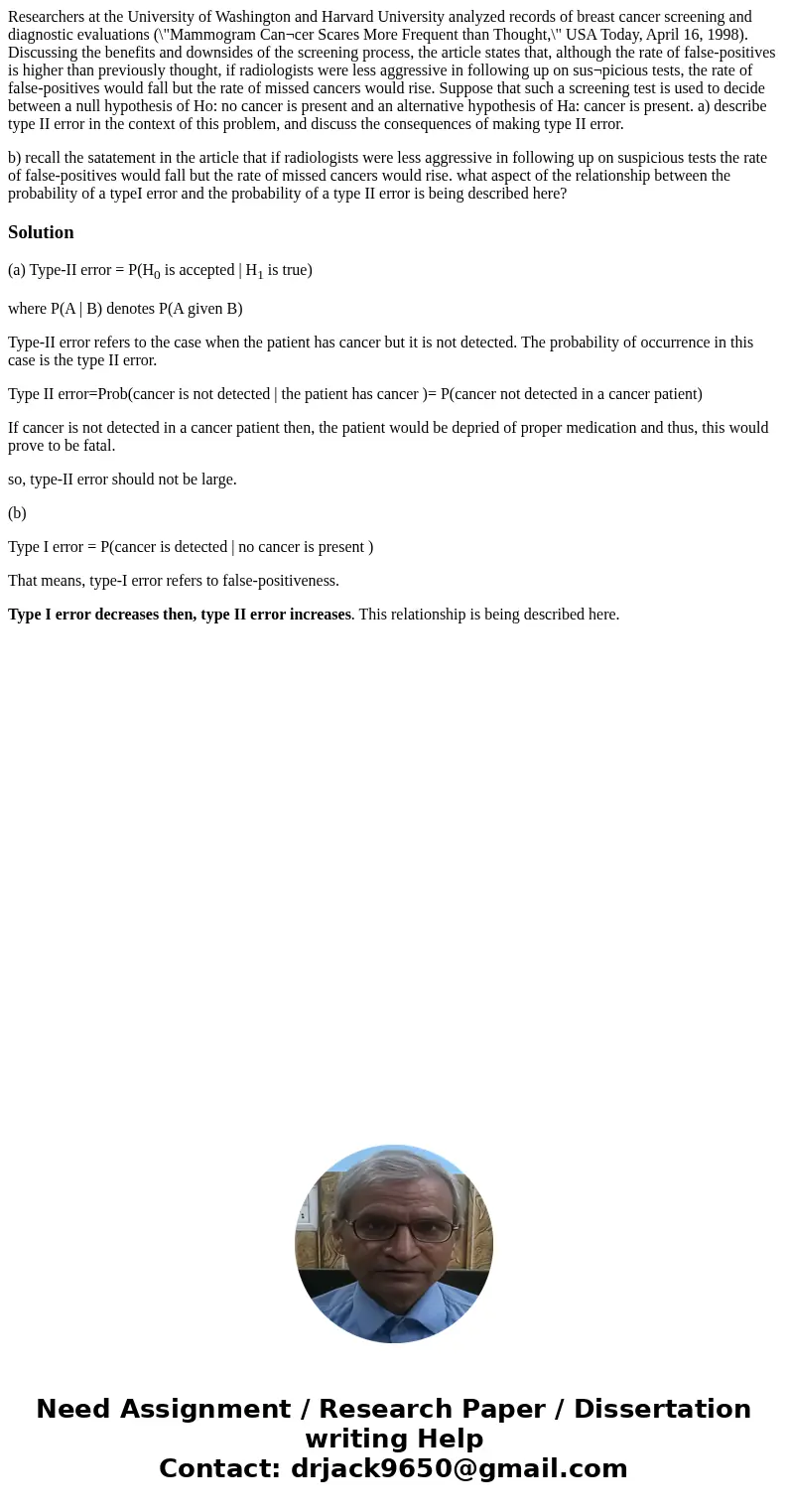Researchers at the University of Washington and Harvard Univ
Researchers at the University of Washington and Harvard University analyzed records of breast cancer screening and diagnostic evaluations (\"Mammogram Can¬cer Scares More Frequent than Thought,\" USA Today, April 16, 1998). Discussing the benefits and downsides of the screening process, the article states that, although the rate of false-positives is higher than previously thought, if radiologists were less aggressive in following up on sus¬picious tests, the rate of false-positives would fall but the rate of missed cancers would rise. Suppose that such a screening test is used to decide between a null hypothesis of Ho: no cancer is present and an alternative hypothesis of Ha: cancer is present. a) describe type II error in the context of this problem, and discuss the consequences of making type II error.
b) recall the satatement in the article that if radiologists were less aggressive in following up on suspicious tests the rate of false-positives would fall but the rate of missed cancers would rise. what aspect of the relationship between the probability of a typeI error and the probability of a type II error is being described here?
Solution
(a) Type-II error = P(H0 is accepted | H1 is true)
where P(A | B) denotes P(A given B)
Type-II error refers to the case when the patient has cancer but it is not detected. The probability of occurrence in this case is the type II error.
Type II error=Prob(cancer is not detected | the patient has cancer )= P(cancer not detected in a cancer patient)
If cancer is not detected in a cancer patient then, the patient would be depried of proper medication and thus, this would prove to be fatal.
so, type-II error should not be large.
(b)
Type I error = P(cancer is detected | no cancer is present )
That means, type-I error refers to false-positiveness.
Type I error decreases then, type II error increases. This relationship is being described here.

 Homework Sourse
Homework Sourse